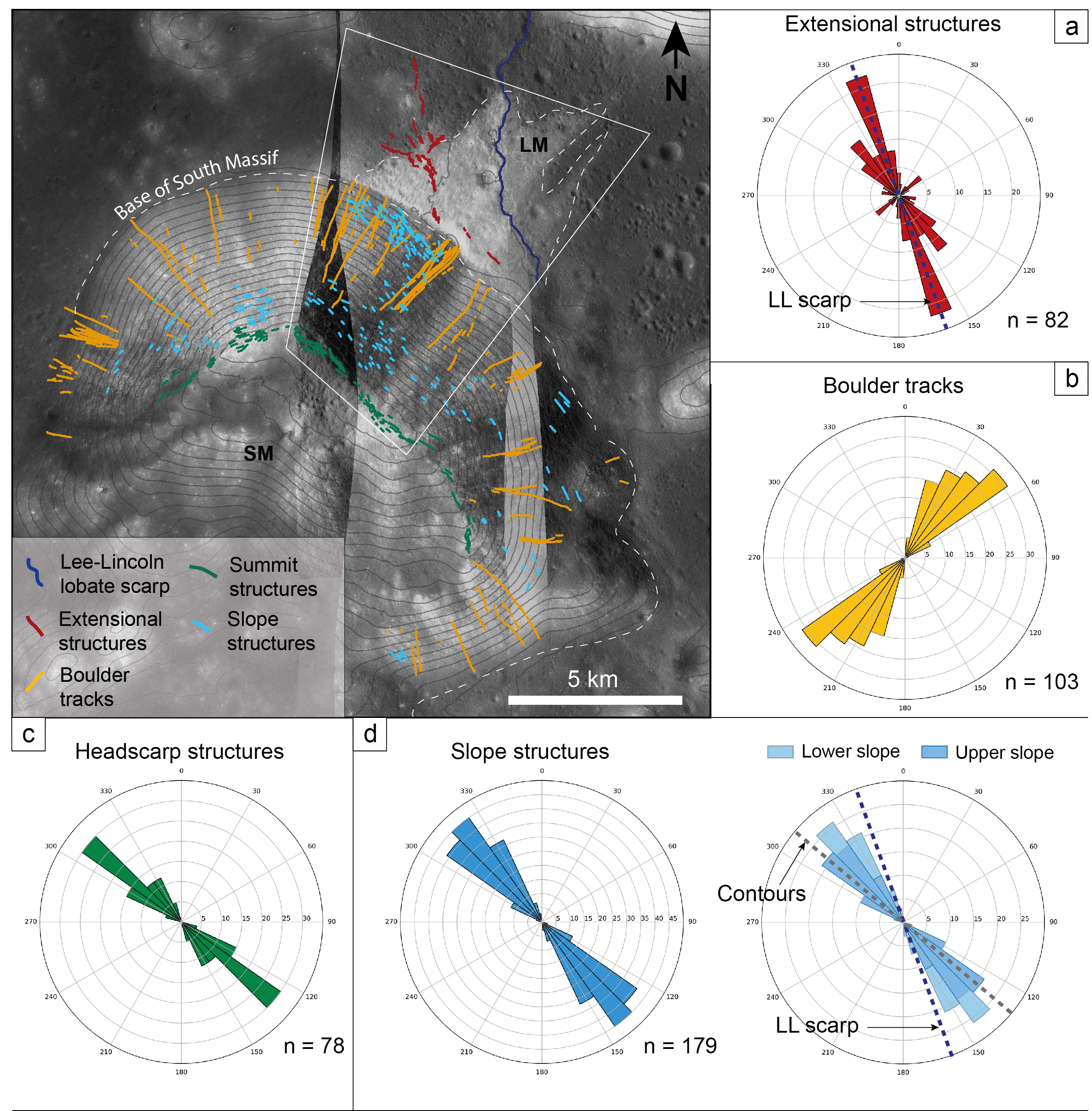Recent and active surface changes on the Moon.
The availability of high-resolution images provided by the Narrow Angle Camera (NAC), on board the Lunar Reconnaissance Orbiter Camera (LROC), has enabled the study of recent and active surface processes on the Moon by revealing geological and geomorphological features with unprecedent detail. Amongst the new discoveries are a variety of surface changes, such as missing or degraded small craters, disturbed regolith from downslope creep, fresh boulder fields on the slopes of scarps, boulder falls on scarps and nearby slopes. Such surface changes have been interpreted as evidence of recent ground shaking derived from impact cratering and/or lunar seismic activity.
1. Slope deformation processes on the South Massif.
Recent tectonism and the long-lasting effects of subsurface geometry of Taurus-Littrow Valley,
Apollo 17 landing site.
The South Massif and Taurus-Littrow Valley represent a unique area for understanding recent geological processes on the Moon. The presence of two recent, overlapping landslide deposits, and boulder falls, suggests that a repetitive instability has affected the north-east facing slope of the South Massif. The presence of the young Lee-Lincoln lobate scarp associated with a thrust fault suggests that seismic shaking may have been an important factor in triggering surface changes and mass-wasting events in the area. In this work, we use the younger landslide deposit as a geomorphological marker. represents the only extraterrestrial landslide for which an absolute age is provided (70-110 Myr), thanks to the Apollo 17 returned samples. Therefore, the Light Mantle deposit can be used as geomorphological marker and time constraint for surface changes that occurred since its emplacement.
We have identified a variety of features and structures on the NE-slope of the South Massif that are evidence of recent slope deformation processes, such as boulders with associated boulder tracks, regolith disturbance, breaks in slope, crestal graben, and other linear slope structures. The extensive presence of slope deformation evidence suggests that this location has been affected by repetitive processes that have effectively modified the slopes of the South Massif. We suggest that the efficiency of these processes is the product of continuous, and perhaps ongoing, effects of recent tectonism in Taurus-Littrow Valley associated with the Lee-Lincoln fault, coupled with the influence of the subsurface geometry of the valley inherited from the impact basin formation.

2. Tycho's secondaries.
...
Work in progress